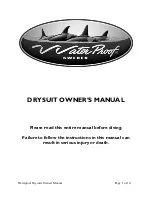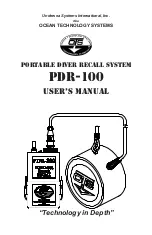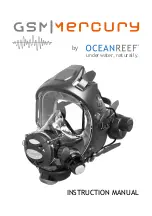
significant migration of liquids
through the plug material. Figure 14
shows a typical 2 component pair.
Migration does occur, and this limits
the lifetime of a pH junction, from
depletion of solution inside the
reference junction or from
contamination. The junction is
damaged by drying out because
insoluble crystals may form in a
layer, obstructing contact with test
solutions. See pH/ORP, pg. 25.
4. The Myron L Integral pH Sensor
The sensor in the Ultrameter (figure 15)
is a single construction in an easily
replaceable package. The sensor body
holds an oversize solution supply for long
life. The reference junction “wick” is
porous to provide a very stable, low
permeability interface. It is located
under the glass pH sensing electrode.
The construction combines all the best
features of any pH sensor known.
5. Sources of Error
The basics are presented in pH/ORP, pg. 25.
a. Reference Junction
The most common sensor problem will be a clogged junction because a
cell was allowed to dry out. The symptom is a drift in the “zero” setting at 7
pH. This is why the Ultrameter does not allow more than 1 pH unit of
offset during calibration. At that point the junction is unreliable.
b. Sensitivity Problems
Sensitivity is the receptiveness of the glass surface, which can be
diminished by a film on the surface, or a crack in the glass. These
problems also cause long response time.
c. Temperature Compensation
pH sensor glass changes its sensitivity slightly with temperature, so the
further from pH 7 one is, the more effect will be seen. A pH of 11 at 40°C
would be off by 0.2 units. The Ultrameter senses the cell temperature
and compensates the reading.
36
Figure 14
KCl solution
Electrode wire
Glass surface
Junction plug
Electrode wire
H+ ions
Figure 15
Junction plug
Platinum button
H+ ions
Electrode wires
KCl solution
Glass
Sleeve
Glass
Surface
B. ORP/Oxidation-Reduction Potential/REDOX
1. ORP as an Indicator
ORP is the measurement of the ratio of oxidizing activity to reducing
activity in a solution. It is the potential of a solution to give up electrons
(oxidize other things) or gain electrons (reduce).
Like acidity and alkalinity, the increase of one is at the expense of the
other, so a single voltage is called the Oxidation-Reduction Potential,
with a positive voltage showing, a solution wants to steal electrons
(oxidizing agent). Chlorinated water will show a positive ORP value, for
instance.
2. ORP Units
ORP is measured in millivolts, with no correction for solution temperature.
Like pH, it is not a measurement of concentration directly, but of activity
level. In a solution of only one active component, ORP does indicate
concentration. Also, as with pH, a very dilute solution will take time to
accumulate a readable charge.
3. The ORP Sensor
An ORP sensor uses a small platinum surface to accumulate charge
without reacting chemically. That charge is measured relative to the
solution, so the solution “ground” voltage comes from a reference
junction - same as the pH sensor uses.
4. The Myron L ORP Sensor
Figure 15 pg. 36 shows the platinum button in a glass sleeve. The same
reference is used for both the pH and the ORP sensors. Both pH and
ORP will indicate 0 for a neutral solution. Calibration at zero compensates
for error in the reference junction.
A zero calibration solution for ORP is not practical, so the Ultrameter uses
the offset value determined during calibration to 7 in pH calibration (pH 7
= 0 mV). Sensitivity of the ORP surface is fixed, so there is no gain
adjustment either.
5. Sources of Error
The basics are presented in pH/ORP, pg. 25, because sources of error
are much the same as for pH. The junction side is the same, and though
the platinum surface will not break like the glass pH surface, its protective
glass sleeve can be broken. A surface film will slow the response time and
diminish sensitivity. It can be cleaned off with detergent or acid, as with
the pH glass.
37






































